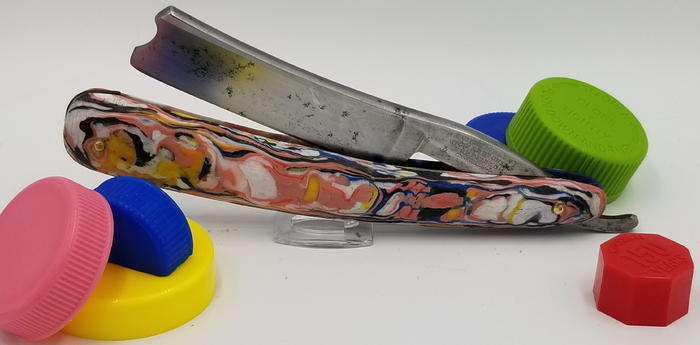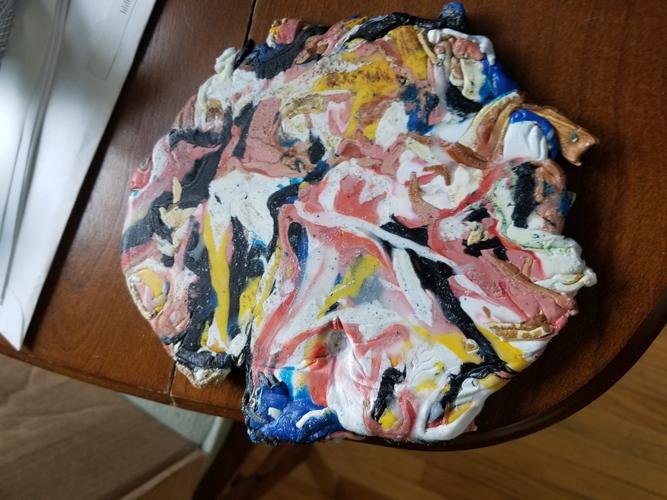Results 1 to 10 of 42
Thread: Scales Experiment.
Threaded View
-
07-05-2020, 07:57 PM #1
 Scales Experiment.
Scales Experiment.
I watched a few videos on plastic recycling recently and thought I would give it a try.
This is the results of my first attempt making scales from self-recycled HDPE (2) plastic.

Bottle caps, a detergent bottle, coffee container, milk jug and a mustard bottle (all HDPE, High Density PolyEthylene) were cut up into chips and strips and melted in a toaster oven at about 350 degrees F. Then it was sandwiched and clamped between two boards and left to cool.
The resulting sheet was then cut and shaped into scales. Not bad for a first try but can definitely be improved.

My next attempt will be a lot less chaotic in the pattern and colors and at some point I'll likely try melting directly into a scale mold.
-
The Following 9 Users Say Thank You to joamo For This Useful Post:
bluesman7 (07-06-2020), cudarunner (07-06-2020), markbignosekelly (07-06-2020), MrZ (07-20-2020), nipper (07-06-2020), PaulFLUS (07-21-2020), petercp4e (07-06-2020), RezDog (07-06-2020), STF (07-25-2020)


 138Likes
138Likes LinkBack URL
LinkBack URL About LinkBacks
About LinkBacks









 Reply With Quote
Reply With Quote